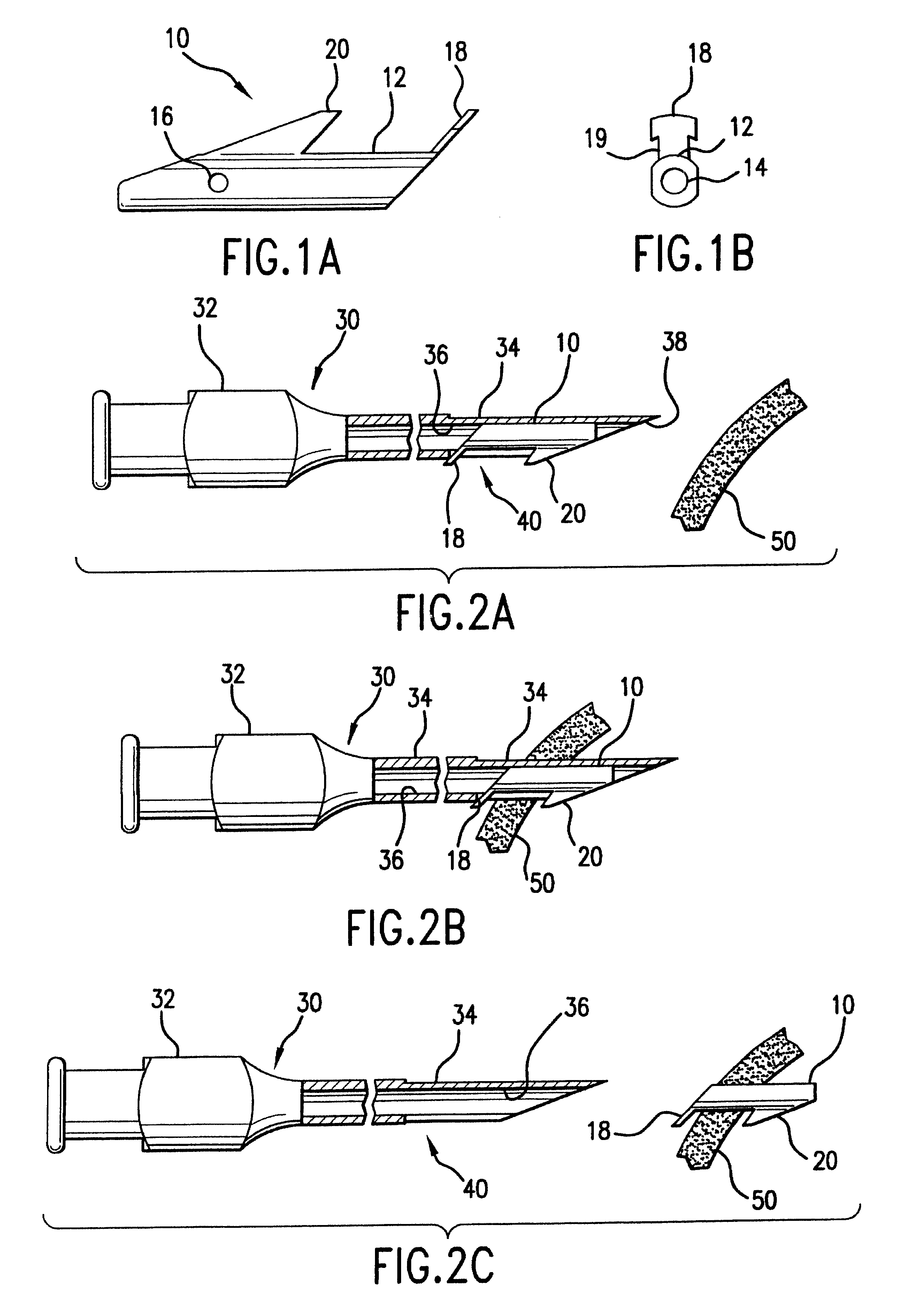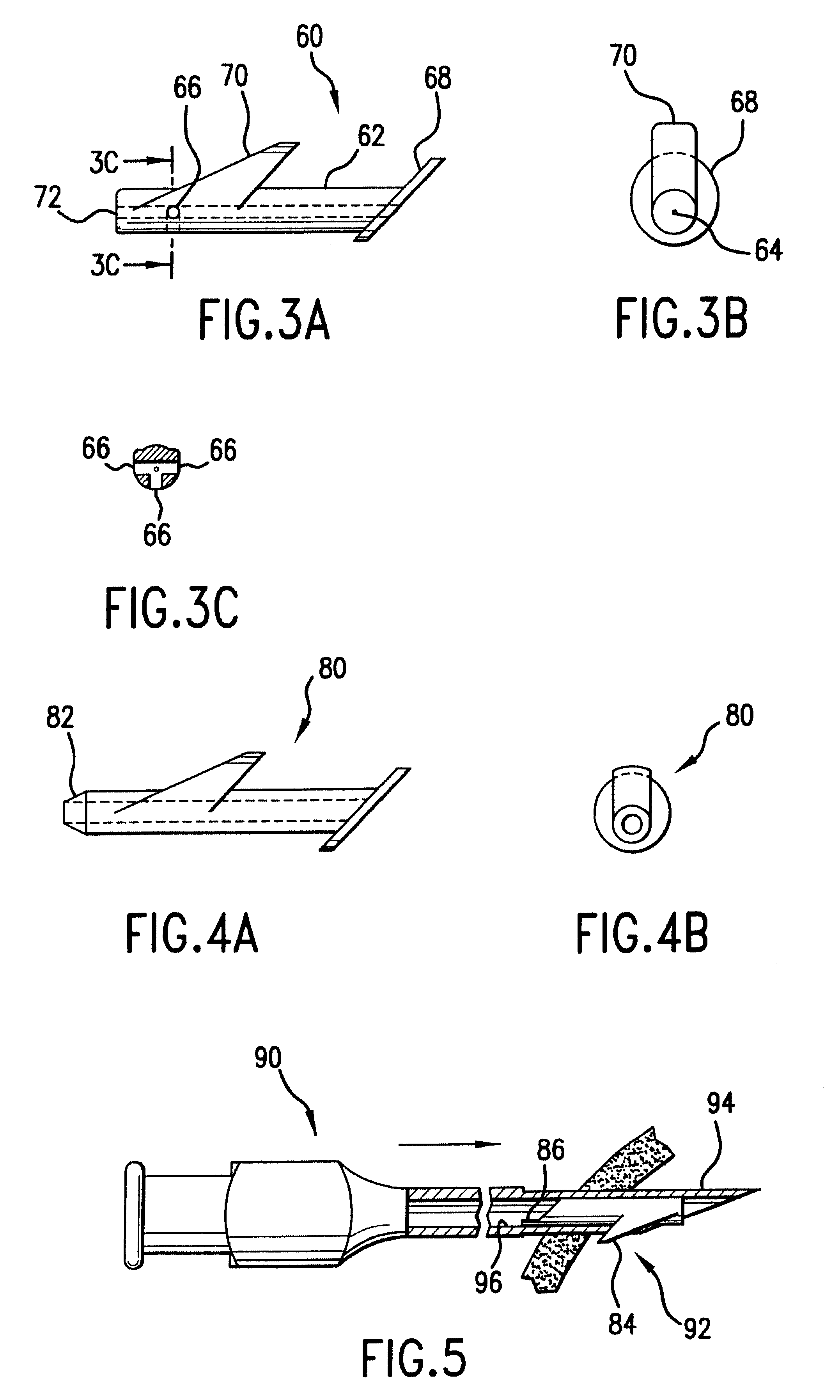Flow control device, introducer and method of implanting
a flow control device and introducer technology, applied in the field of medical implants, can solve the problems of clogging of implants, affecting the safety of patients, and prior implants at times requiring insertion operations that are complicated, costly, and time-consuming, and achieves the effect of simple and efficient procedures
- Summary
- Abstract
- Description
- Claims
- Application Information
AI Technical Summary
Benefits of technology
Problems solved by technology
Method used
Image
Examples
first embodiment
FIGS. 1A and 1B show a side view and end view, respectively, of a drainage implant 10 in accordance with the invention. The implant 10 has a tube 12 having a tube passage 14 for permitting fluid flow between an inlet end of the implant and an outlet end of the implant. One or more side holes 16 may be provided around the circumference of the tube 12 near the inlet end, allowing access for fluid flow into the tube passage 14.
The implant 10 has an outer flange 18 at the outlet end and a retention projection 20 near the inlet end. The plane of the outer flange 18 may form an angle with the tube 12, with the angle selected to correspond to the angle between the surface of the tissue into which the implant 10 is to be inserted and the axis of insertion of the tube 12 of the implant 10.
FIGS. 2A through 2C illustrate an introducer or delivery device 30 for implanting the implant 10 and the method of implanting the implant 10 with that delivery device 30. The delivery device 30 has handle 3...
second embodiment
FIGS. 3A, 3B and 3C show a side view, end view, and cross-section, respectively, of a drainage implant 60 in accordance with the invention. Like the implant 10 shown in FIGS. 1A and 1B, the implant 60 in FIGS. 3A, 3B, and 3C has a tube 62 having a tube passage 64 and side holes 66 opening into the tube passage 64. The implant 60 also has an outer flange 68 at the outlet end and a retention projection 70 near the inlet end. In this case, the outer flange 68 projects beyond the outer surface of the tube 62 in all directions around the circumference of the tube 62.
third embodiment
FIGS. 4A and 4B show a side view and end view, respectively, of a drainage implant 80, similar to the implant 60 shown in FIGS. 3A, 3B, and 3C. The tip 82 of the implant 80 is conical, in contrast to the blunt tip 72 of the implant 60.
In an alternative construction, the implant may be made with a closed end with a slit in it. Fluid can only pass through the device when the pressure rises sufficiently to open the slit. Alternatively, a different portion along the length of the tube passage may be provided with such a construction.
FIG. 5 illustrates an alternative embodiment of a delivery device 90 in accordance with the invention. In this embodiment, the opening 92 allows only the retention projection 84 of the implant to protrude beyond the wall of the tube 94 of the delivery device. The outer flange 86 is accommodated within the central bore 96 of the delivery device 90. In this embodiment, the outer flange 86 must be folded or bent to be accommodated within the central bore 96 of ...
PUM
| Property | Measurement | Unit |
|---|---|---|
| diameter | aaaaa | aaaaa |
| diameter | aaaaa | aaaaa |
| intraocular pressure | aaaaa | aaaaa |
Abstract
Description
Claims
Application Information
 Login to View More
Login to View More - R&D
- Intellectual Property
- Life Sciences
- Materials
- Tech Scout
- Unparalleled Data Quality
- Higher Quality Content
- 60% Fewer Hallucinations
Browse by: Latest US Patents, China's latest patents, Technical Efficacy Thesaurus, Application Domain, Technology Topic, Popular Technical Reports.
© 2025 PatSnap. All rights reserved.Legal|Privacy policy|Modern Slavery Act Transparency Statement|Sitemap|About US| Contact US: help@patsnap.com



